-
 Bitcoin
Bitcoin $114200
0.00% -
 Ethereum
Ethereum $3637
0.56% -
 XRP
XRP $2.950
-2.01% -
 Tether USDt
Tether USDt $0.9999
0.02% -
 BNB
BNB $761.0
0.55% -
 Solana
Solana $164.1
-1.38% -
 USDC
USDC $0.9999
0.02% -
 TRON
TRON $0.3332
0.36% -
 Dogecoin
Dogecoin $0.2012
-0.52% -
 Cardano
Cardano $0.7261
-1.41% -
 Hyperliquid
Hyperliquid $37.62
-2.13% -
 Stellar
Stellar $0.3930
-2.65% -
 Sui
Sui $3.441
-0.16% -
 Bitcoin Cash
Bitcoin Cash $563.8
0.70% -
 Chainlink
Chainlink $16.50
0.09% -
 Hedera
Hedera $0.2424
-0.14% -
 Ethena USDe
Ethena USDe $1.001
0.01% -
 Avalanche
Avalanche $22.20
0.00% -
 Litecoin
Litecoin $118.0
-2.48% -
 UNUS SED LEO
UNUS SED LEO $8.991
0.12% -
 Toncoin
Toncoin $3.195
-3.87% -
 Shiba Inu
Shiba Inu $0.00001217
0.12% -
 Uniswap
Uniswap $9.674
-0.21% -
 Polkadot
Polkadot $3.633
1.00% -
 Monero
Monero $295.3
-0.82% -
 Dai
Dai $0.9999
0.00% -
 Bitget Token
Bitget Token $4.321
-0.41% -
 Cronos
Cronos $0.1392
0.73% -
 Pepe
Pepe $0.00001027
-0.89% -
 Aave
Aave $258.5
0.32%
Are the income from pledge mining affected by node competition?
Staking cryptocurrency rewards depend heavily on node competition; more nodes mean less reward per staker, while network activity and protocol design also significantly influence profitability.
Mar 23, 2025 at 01:56 pm
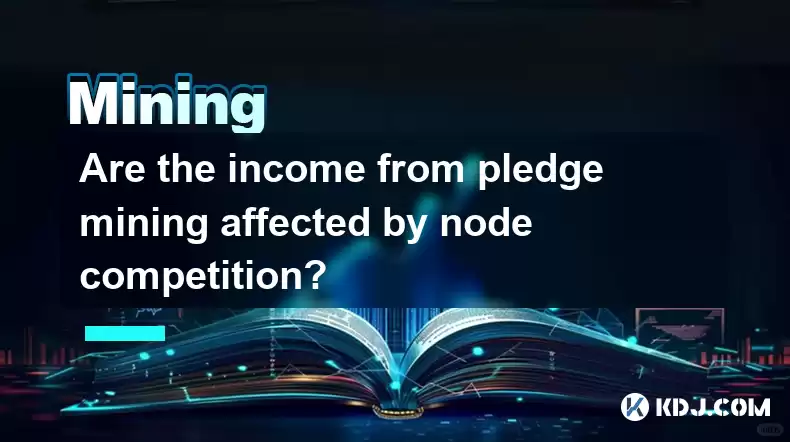
Are the Income from Pledge Mining Affected by Node Competition?
Staking, or pledge mining, in the cryptocurrency world involves locking up your cryptocurrency holdings to support the network's operations and earn rewards. However, the profitability of this activity is not static. A significant factor influencing returns is the level of competition amongst nodes participating in the consensus mechanism.
The intensity of competition directly impacts the rewards received per staked coin. When fewer nodes participate, the rewards are distributed amongst a smaller pool, leading to higher returns per individual staker. Conversely, a surge in node participation dilutes the rewards, resulting in lower payouts for each individual. This is a fundamental aspect of the economic model of many proof-of-stake blockchains.
This competition is multifaceted. It's not just about the sheer number of nodes, but also their size and technical capabilities. Larger nodes, often run by well-resourced entities, may possess advantages in terms of infrastructure and efficiency, potentially allowing them to capture a disproportionate share of the block rewards. This creates an uneven playing field for smaller stakers.
Furthermore, the network's overall activity and transaction volume influence profitability. Higher network activity translates to more frequent block rewards, potentially offsetting the effects of increased node competition. Conversely, periods of low activity can exacerbate the negative impact of competition, leading to meager returns.
The specific consensus mechanism employed by a blockchain also plays a vital role. Some protocols utilize mechanisms that prioritize certain nodes or reward them more generously, creating variations in reward distribution, even with similar levels of overall node participation. Understanding the specifics of the chosen consensus mechanism is crucial.
Let's examine how different aspects of node competition affect staking rewards:
- Increased Node Count: A higher number of validators participating in the network increases competition for block rewards, resulting in a smaller share for each individual node.
- Node Size and Infrastructure: Larger, more powerful nodes often have an advantage, securing more blocks and earning more rewards, potentially at the expense of smaller nodes.
- Network Activity: High network activity leads to more frequent block production, potentially offsetting the effects of intense competition. Low activity has the opposite effect.
- Protocol Design: Specific design choices in a blockchain's protocol can influence reward distribution, favoring certain types of nodes over others.
- Technical Proficiency: Nodes with better optimized software and hardware can potentially capture more rewards than less efficient nodes.
Understanding the dynamics of node competition is essential for making informed decisions about staking. It's crucial to research the specific blockchain you're considering, examining its consensus mechanism, network activity, and the overall competitive landscape before committing your assets. Remember, the rewards are not guaranteed and fluctuate based on these factors. A seemingly attractive staking opportunity could become less lucrative with a sudden increase in node participation.
The decentralized nature of many blockchains implies that the level of competition is inherently dynamic and unpredictable. This inherent volatility is a key factor that potential stakers need to accept.
Common Questions and Answers:
Q: Does staking always guarantee profit?
A: No, staking doesn't guarantee profit. Returns depend on various factors, including network activity, node competition, and the blockchain's reward structure. There's always a risk of losing potential gains due to changing market conditions and competitive pressures.
Q: How can I minimize the impact of node competition on my staking rewards?
A: There's no foolproof method to completely eliminate the impact of competition. However, strategies like joining a staking pool to share resources and risks, or selecting less congested blockchains, can help mitigate some of the negative effects. Thorough research into the chosen blockchain is vital.
Q: What are the advantages of staking despite node competition?
A: Staking offers several benefits even with competition. These include contributing to network security, earning passive income, and supporting the growth of the cryptocurrency ecosystem. The potential for reward remains, even if it’s less than in a less competitive environment.
Q: Are there blockchains less susceptible to intense node competition?
A: Some blockchains might have mechanisms that distribute rewards more evenly, or they might have a smaller overall number of validators. However, even these networks are not immune to changing competitive dynamics as adoption and participation grow.
Q: What is the role of staking pools in mitigating node competition?
A: Staking pools combine the resources of multiple stakers, increasing their collective chances of validating blocks and earning rewards. This can make it easier to compete with larger, more powerful individual nodes. However, it also involves sharing the rewards with other pool participants and potentially paying pool fees.
Q: How frequently do the rewards from staking change?
A: The frequency of reward changes depends on the specific blockchain and its reward structure. Some networks might adjust rewards regularly, while others may have more stable reward schedules. It is vital to understand the specific reward mechanism of the chosen blockchain. It's advisable to monitor the network and its dynamics to gauge the potential impact on future rewards.
Q: Can I increase my staking rewards by improving my node's performance?
A: Yes, improving your node's performance, such as by using better hardware or optimizing software, can enhance your chances of validating blocks and earning higher rewards. However, this requires technical expertise and investment. The potential increase in rewards might be offset by the costs involved.
This information is for educational purposes only and is not financial advice. Always conduct thorough research before making any investment decisions.
Disclaimer:info@kdj.com
The information provided is not trading advice. kdj.com does not assume any responsibility for any investments made based on the information provided in this article. Cryptocurrencies are highly volatile and it is highly recommended that you invest with caution after thorough research!
If you believe that the content used on this website infringes your copyright, please contact us immediately (info@kdj.com) and we will delete it promptly.
- Fast-Moving Cryptos: Could Pudgy Penguins Deliver High Gains by 2025?
- 2025-08-06 16:30:11
- Crypto Gaming Tokens: August 2025 Investment Opportunities
- 2025-08-06 16:50:12
- Flipster, Kaia, and Stablecoin Access: Bridging Crypto to Everyday Life in Asia
- 2025-08-06 16:50:12
- Superp ($SUP) Takes Flight on Binance Alpha: A New Era for On-Chain Perpetual Trading
- 2025-08-06 16:30:11
- Indonesia's Crypto Tax Tightrope: Balancing Revenue and Bitcoin Adoption
- 2025-08-06 17:10:12
- Nissan Magnite Kuro: India's Black Edition Steals the Show
- 2025-08-06 16:56:02
Related knowledge
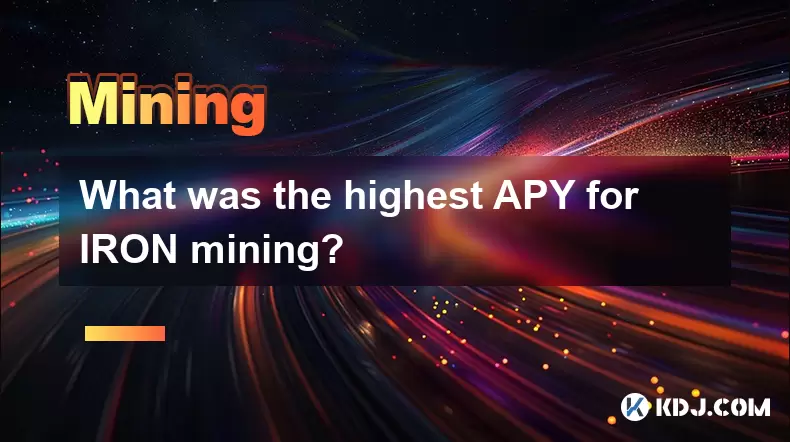
What was the highest APY for IRON mining?
Jul 23,2025 at 05:14am
Understanding IRON Token and Its Mining MechanismThe IRON token is a stablecoin that operates within the Iron Finance ecosystem, primarily on blockcha...

What is impermanent loss in IRON pools?
Jul 23,2025 at 09:00am
Understanding Impermanent Loss in the Context of IRON PoolsImpermanent loss is a phenomenon that affects liquidity providers in decentralized finance ...
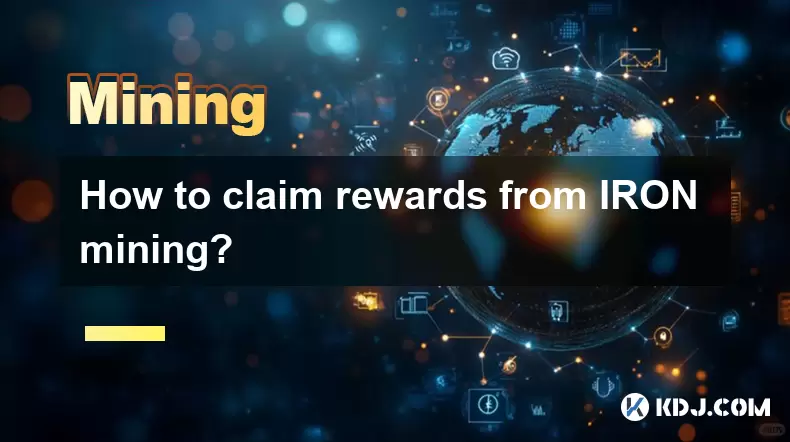
How to claim rewards from IRON mining?
Jul 23,2025 at 02:21pm
Understanding IRON Mining and Reward MechanismsIRON Finance operated as a decentralized finance (DeFi) protocol on the Polygon and Binance Smart Chain...
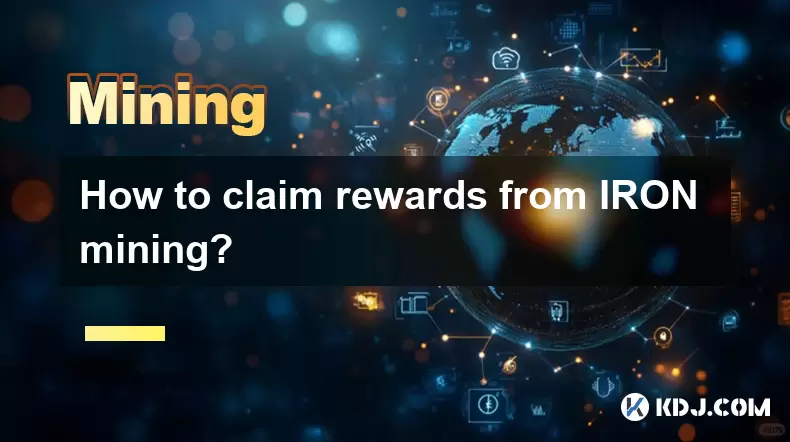
How to claim rewards from IRON mining?
Jul 29,2025 at 05:07am
Understanding IRON Mining and Reward MechanismIRON is a dual-token system designed to stabilize the value of a synthetic asset through a combination o...

IRON mining tutorial for beginners
Jul 27,2025 at 12:01am
What Is IRON and How Does It Work in the Cryptocurrency Ecosystem?IRON is a cryptocurrency token that operates on the Binance Smart Chain (BSC) and is...
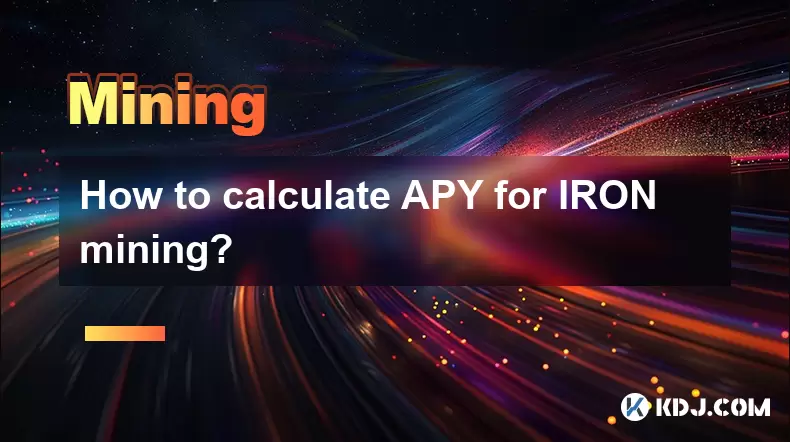
How to calculate APY for IRON mining?
Jul 28,2025 at 09:49am
Understanding APY in the Context of IRON Token MiningWhen engaging in IRON token mining within decentralized finance (DeFi) platforms, Annual Percenta...

What was the highest APY for IRON mining?
Jul 23,2025 at 05:14am
Understanding IRON Token and Its Mining MechanismThe IRON token is a stablecoin that operates within the Iron Finance ecosystem, primarily on blockcha...

What is impermanent loss in IRON pools?
Jul 23,2025 at 09:00am
Understanding Impermanent Loss in the Context of IRON PoolsImpermanent loss is a phenomenon that affects liquidity providers in decentralized finance ...

How to claim rewards from IRON mining?
Jul 23,2025 at 02:21pm
Understanding IRON Mining and Reward MechanismsIRON Finance operated as a decentralized finance (DeFi) protocol on the Polygon and Binance Smart Chain...

How to claim rewards from IRON mining?
Jul 29,2025 at 05:07am
Understanding IRON Mining and Reward MechanismIRON is a dual-token system designed to stabilize the value of a synthetic asset through a combination o...

IRON mining tutorial for beginners
Jul 27,2025 at 12:01am
What Is IRON and How Does It Work in the Cryptocurrency Ecosystem?IRON is a cryptocurrency token that operates on the Binance Smart Chain (BSC) and is...

How to calculate APY for IRON mining?
Jul 28,2025 at 09:49am
Understanding APY in the Context of IRON Token MiningWhen engaging in IRON token mining within decentralized finance (DeFi) platforms, Annual Percenta...
See all articles

























































































